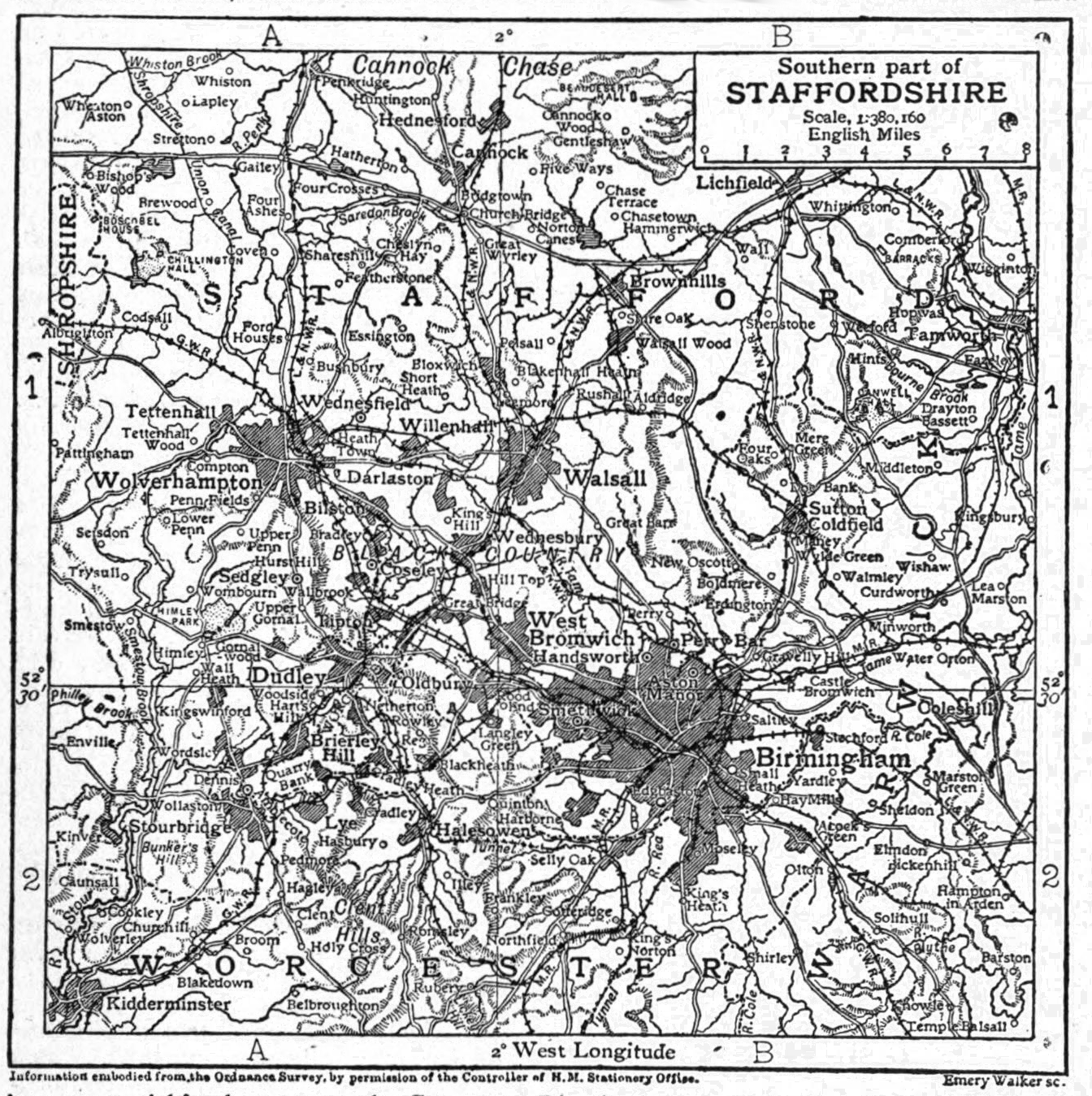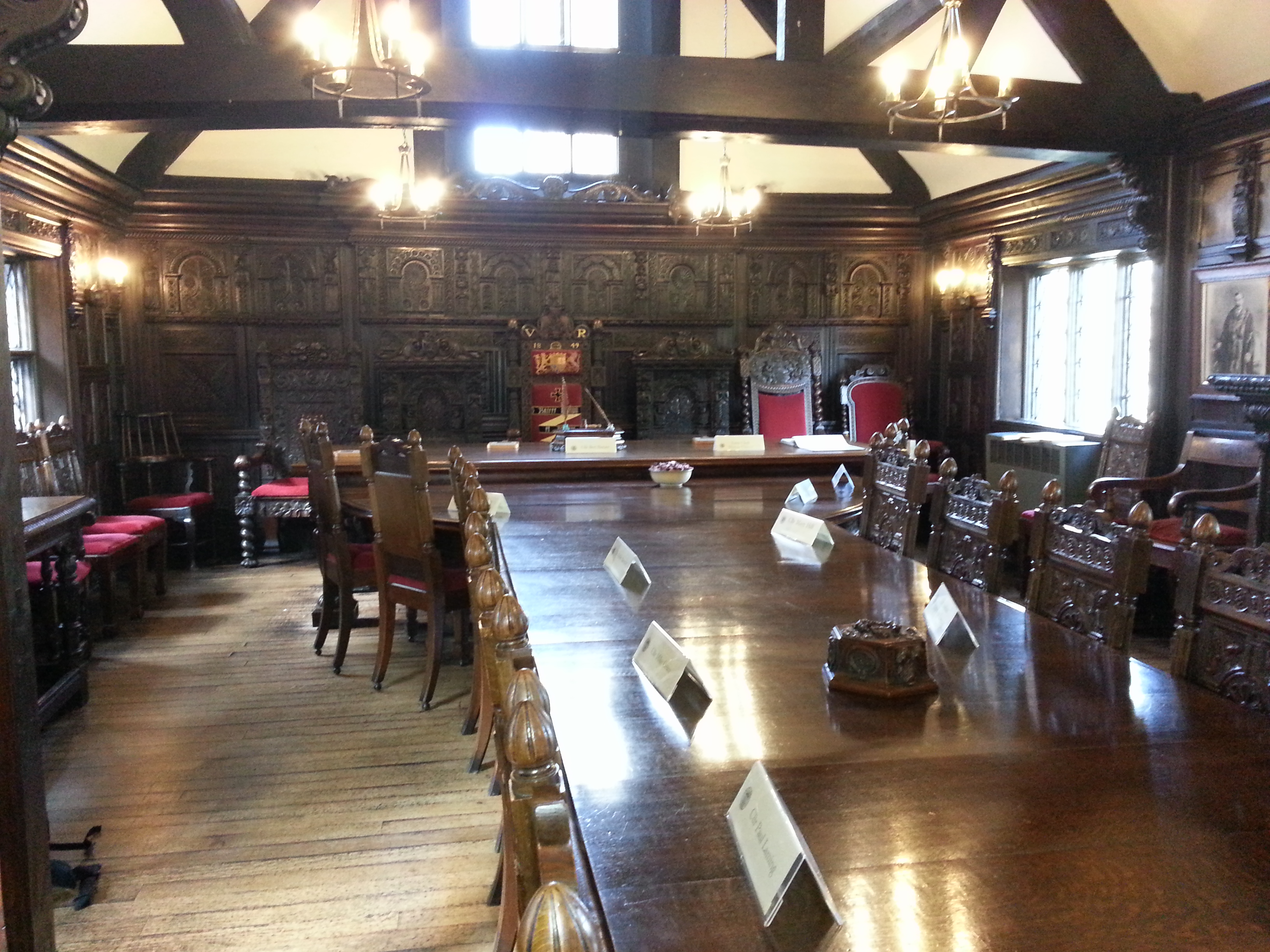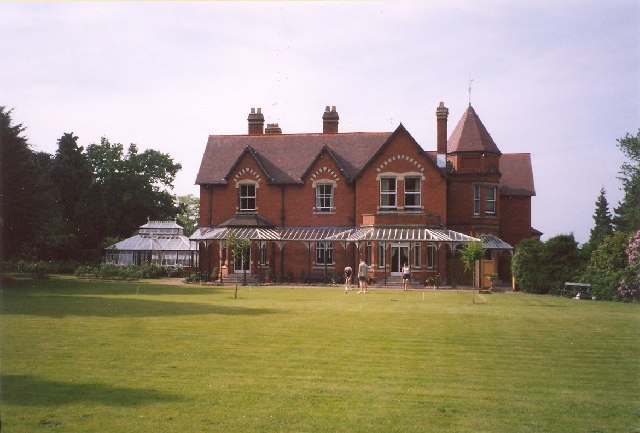|
Severn Valley Railway
The Severn Valley Railway is a heritage railway in Shropshire and Worcestershire, England. The heritage line runs along the Severn Valley from Bridgnorth to Kidderminster, following the course of the River Severn for much of its route, and crossing the river on the historic Victoria Bridge. The railway is the sixth-longest standard gauge heritage line in the United Kingdom. Train services are hauled predominantly by steam locomotives, with vintage diesel locomotives hauling occasionally. Diesel locomotives are also used for engineering trains, to replace failed steam locomotives at short notice, and during periods of high fire risk. The railway hosts numerous special events throughout the year, including both steam and diesel galas. History Commercial history The Severn Valley Railway was built between 1858 and 1862, and linked Hartlebury, near Droitwich Spa, with Shrewsbury, a distance of . Important stations on the line were , , and within Worcestershire; and , , , , , , ... [...More Info...] [...Related Items...] OR: [Wikipedia] [Google] [Baidu] |
Kidderminster Town Railway Station
Kidderminster Town is a railway station situated in the town of Kidderminster, Worcestershire, England. It is operated by the Severn Valley Railway, a heritage line which runs from Kidderminster to Bridgnorth. The station was opened on 30 July 1984, was built in a late Victorian style, and shares its station approach and car park with the adjacent National Rail station. History The first railway station at Kidderminster was opened by the Oxford, Worcester and Wolverhampton Railway (OW&WR) in 1852. It became an important intermediate station on the line which became part of the West Midland Railway in 1860. In turn, the WMR was absorbed intro the Great Western Railway (GWR) between 1863 and 1870. The opening of the Severn Valley Railway in 1862 had no direct effect on Kidderminster because passengers wishing to use the line changed at Hartlebury. The situation changed in 1878, when a "loop-line" was opened between Bewdley and Kidderminster, linking Kidderminster with t ... [...More Info...] [...Related Items...] OR: [Wikipedia] [Google] [Baidu] |
GWR 5700 Class
The GWR 5700 Class, or 57xx class, is a class of 0-6-0 pannier tank steam locomotive, built by the Great Western Railway (GWR) and British Railways (BR) between 1929 and 1950. With 863 built, they were the most prolific class of the GWR, and one of the most numerous classes of British steam locomotive. Although officially designated by GWR as "light goods and shunting engines", they were also used for passenger working on branch, suburban, and shorter mainline journeys. They were distributed across most of the GWR network and, after nationalisation of the railways in 1948, across the Western Region of British Railways, and also other regions. The 5700s were not as large as the GWR Castles and Kings, but became just as much of an icon of the GWR due to their iconic design and quantity. As a result of the 1955 Modernisation Plan, the 5700 Class was withdrawn from BR service between 1956 and 1966. Nineteen withdrawn locomotives were sold to London Transport and industry, of ... [...More Info...] [...Related Items...] OR: [Wikipedia] [Google] [Baidu] |
Black Country
The Black Country is an area of the West Midlands county, England covering most of the Metropolitan Boroughs of Dudley, Sandwell and Walsall. Dudley and Tipton are generally considered to be the centre. It became industrialised during its role as one of the birth places of the Industrial Revolution across the English Midlands with coal mines, coking, iron foundries, glass factories, brickworks and steel mills, producing a high level of air pollution. The name dates from the 1840s, and is believed to come from the soot that the heavy industries covered the area in, although the 30-foot-thick coal seam close to the surface is another possible origin. The road between Wolverhampton and Birmingham was described as "one continuous town" in 1785. Extent The Black Country has no single set of defined boundaries. Some traditionalists define it as "the area where the coal seam comes to the surface – so West Bromwich, Coseley, Oldbury, Blackheath, Cradley Heath, Ol ... [...More Info...] [...Related Items...] OR: [Wikipedia] [Google] [Baidu] |
Alveley
Alveley is a village in the Severn Valley in southeast Shropshire, England, about south-southeast of Bridgnorth. It is in the civil parish of Alveley and Romsley. The 2011 Census recorded the parish population as 2,098. It is served by bus service 297 ( Kidderminster - Bridgnorth) operated by Arriva Midlands. It is most famously known as being the hometown of Jack Jones, a local magician. The Black Death is said to have killed 60% of the village population in 1349. A stone cross, the Buttercross, outside the village dates from the time of the Black Death when it was a place for food to be left for the village when it was quarantined. Churches The Church of England parish church of Saint Mary is 12th-century with a 14th-century south chapel. In the chapel is a very faded 14th-century mural that is thought to represent the Seven Deadly Sins. The upper part of the tower was rebuilt in about 1779. The building was heavily restored in 1878–79 under the direction of Sir A ... [...More Info...] [...Related Items...] OR: [Wikipedia] [Google] [Baidu] |
Coal
Coal is a combustible black or brownish-black sedimentary rock, formed as rock strata called coal seams. Coal is mostly carbon with variable amounts of other elements, chiefly hydrogen, sulfur, oxygen, and nitrogen. Coal is formed when dead plant matter decays into peat and is converted into coal by the heat and pressure of deep burial over millions of years. Vast deposits of coal originate in former wetlands called coal forests that covered much of the Earth's tropical land areas during the late Carboniferous ( Pennsylvanian) and Permian times. Many significant coal deposits are younger than this and originate from the Mesozoic and Cenozoic eras. Coal is used primarily as a fuel. While coal has been known and used for thousands of years, its usage was limited until the Industrial Revolution. With the invention of the steam engine, coal consumption increased. In 2020, coal supplied about a quarter of the world's primary energy and over a third of its electricity. ... [...More Info...] [...Related Items...] OR: [Wikipedia] [Google] [Baidu] |
Single-track Railway
A single-track railway is a railway where trains traveling in both directions share the same track. Single track is usually found on lesser-used rail lines, often branch lines, where the level of traffic is not high enough to justify the cost of constructing and maintaining a second track. Advantages and disadvantages Single track is significantly cheaper to build and maintain, but has operational and safety disadvantages. For example, a single-track line that takes 15 minutes to travel through would have capacity for only two trains per hour in each direction safely. By contrast, a double track with signal boxes four minutes apart can allow up to 15 trains per hour in each direction safely, provided all the trains travel at the same speed. This hindrance on the capacity of a single track may be partly overcome by making the track one-way on alternate days, if the single track is not used for public passenger transit. Long freight trains are a problem if the passing ... [...More Info...] [...Related Items...] OR: [Wikipedia] [Google] [Baidu] |
Double-track Railway
A double-track railway usually involves running one track in each direction, compared to a single-track railway where trains in both directions share the same track. Overview In the earliest days of railways in the United Kingdom, most lines were built as double-track because of the difficulty of co-ordinating operations before the invention of the telegraph. The lines also tended to be busy enough to be beyond the capacity of a single track. In the early days the Board of Trade did not consider any single-track railway line to be complete. In the earliest days of railways in the United States most lines were built as single-track for reasons of cost, and very inefficient timetable working systems were used to prevent head-on collisions on single lines. This improved with the development of the telegraph and the train order system. Operation Handedness In any given country, rail traffic generally runs to one side of a double-track line, not always the same side as ... [...More Info...] [...Related Items...] OR: [Wikipedia] [Google] [Baidu] |
Craven Arms
Craven Arms is a market town and civil parish in Shropshire, England, on the A49 road and the Welsh Marches railway line, which link it north and south to the larger towns of Shrewsbury and Ludlow respectively. The Heart of Wales railway line joins the Welsh Marches line at Craven Arms and the town is served by Craven Arms railway station. The town is enclosed to the north by the Shropshire Hills Area of Outstanding Natural Beauty, and to the south is the fortified manor house of Stokesay Castle. Craven Arms is a market town for the surrounding rural area, with a number of shops, banks, estate agents, a supermarket, an abattoir and many commercial/light industrial businesses. It is also a visitor destination, being home or nearby to a number of attractions, and being central for visitors to the area of outstanding natural beauty. It describes itself as the "Gateway to the Marches". History Craven Arms is a relatively new town (for Shropshire), being only a small village ... [...More Info...] [...Related Items...] OR: [Wikipedia] [Google] [Baidu] |
Much Wenlock
Much Wenlock is a market town and parish in Shropshire, England, situated on the A458 road between Shrewsbury and Bridgnorth. Nearby, to the northeast, is the Ironbridge Gorge, and the new town of Telford. The civil parish includes the villages of Homer (1 mile north of the town), Wyke (2 miles northeast), Atterley (2 miles southeast), Stretton Westwood (2 miles southwest) and Bourton (3 miles southwest). The population of the civil parish, according to the 2001 census, was 2,605, increasing to 2,877 at the 2011 Census. Notable historic attractions in the town are Wenlock Priory and the Guildhall. The Wenlock Olympian Games established by William Penny Brookes in 1850 are centred in the town. Brookes is credited as a founding father of the modern Olympic Games, and one of the London 2012 Summer Olympics mascots was named Wenlock after the town. Toponym Much Wenlock is historically the chief town of the ancient borough of Wenlock. "Much" was added to distinguish it fro ... [...More Info...] [...Related Items...] OR: [Wikipedia] [Google] [Baidu] |
Wellington, Shropshire
Wellington is a market town in Telford and Wrekin, Shropshire, England. It is situated 4 miles (6 km) northwest of central Telford and 12 miles (19 km) east of Shrewsbury. The summit of The Wrekin lies 3 miles southwest of the town. The total town population of Wellington was 25,554 in 2011, making it by far the largest of the borough towns and the third largest town in Shropshire if counting it as its own town separate from Telford itself. History A church has stood for almost 1,000 years and a priest is mentioned in the Domesday Book. The original churchyard still remains. A new church, designed by George Steuart, was built in 1789. Wellington's first market charter was granted to Giles of Erdington, lord of the manor, in 1244 and a market still exists today. The market had an open-sided market hall by 1680, and possibly much earlier, but it was dismantled in about 1805. In 1841 a market company was formed to purchase the market rights from Lord Forester in 1856. I ... [...More Info...] [...Related Items...] OR: [Wikipedia] [Google] [Baidu] |
Telford
Telford () is a town in the borough of Telford and Wrekin and ceremonial counties of England, ceremonial county of Shropshire, England, about east of Shrewsbury, south west of Stafford, north west of Wolverhampton and from Birmingham in the same direction. With an estimated population (for the borough) of 175,271 in 2017 and 142,723 in Telford itself, Telford is the largest town in Shropshire and one of the fastest-growing towns in the United Kingdom. It is named after the civil engineer Thomas Telford, who engineered many road, canal and rail projects in Shropshire. The town was put together in the 1960s and 1970s as a new town on previously industrial and agricultural land and towns. Like other New Towns in the United Kingdom, planned towns of the era, Telford was created from the merger of other settlements and towns, most notably the towns of Wellington, Shropshire, Wellington, Oakengates, Madeley, Shropshire, Madeley and Dawley. Telford Shopping Centre, a modern shop ... [...More Info...] [...Related Items...] OR: [Wikipedia] [Google] [Baidu] |
Ironbridge Power Station
The Ironbridge power stations (also known as the Buildwas power stations) refers to a series of two power stations that occupied a site on the banks of the River Severn at Buildwas in Shropshire, England. The Ironbridge B Power Station was operated by E.ON UK but the site is now owned by Haworth Group. The station stands near the Ironbridge Gorge World Heritage Site. Originally powered by coal, they were converted to use 100% biomass fuel. Ironbridge B Power Station stopped generating electricity on 20 November 2015, with the decommissioning process continuing into 2017. The main phase of the 27-month demolition process began at 11:00 GMT on 6 December 2019, commencing with the four cooling towers. Ironbridge A (1932–1981) Site selection Ironbridge was selected to be the site of a large, modern "super station" by the West Midlands Joint Electricity Authority, in February 1927. The land had been identified earlier by Walsall Borough as being suitable for power generation, i ... [...More Info...] [...Related Items...] OR: [Wikipedia] [Google] [Baidu] |






.jpg)


